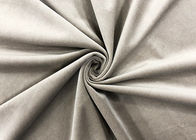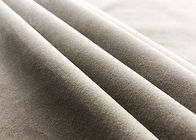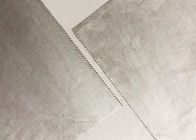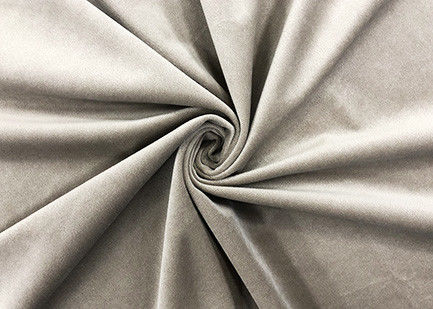260GSM Soft 100% Polyester Velvet Fabric for Home Textile - Khaki
Specifications:
| Item No. |
Composition |
Width |
Weight |
Color |
| LF2526 |
100% polyester |
160 cm |
260 GSM |
Khaki |
Application: toys, home textile, accessory, etc.
The History of Micro Polyester
Before we look more in depth at the pros and cons of this materials, let us take a brief look at the history of polyester and how microfibres of this sort came to be used in so many diverse applications.
For thousands of years, human beings relied on the inherent properties of fibres found in the natural world. We wore cotton, linen, silk or wool and that was pretty much that, right up until the 20th Century. In the 19th Century early attempts to create artificial threads for clothes were successful and the first commercial production of synthetic fabric (rayon) was achieved in France in 1891, but it was not until the 1900s that commercially viable ‘artificial silk’ companies were formed in the US and around the world.
Production of rayon grew over the first decades of the 20th Century to meet demand. By the mid-1920s rayon could be purchased by textile manufacturers for half the price of raw silk. This was one of the more successful of the early synthetic fabrics.
Research into large molecules and synthetic fibres began in the United States in 1926. Headed by W. H. Carothers, a group of scientists at E.I. Du Pont de Nemours and Co. developed the synthetic fibre nylon. Polyester was another of the polymers discovered by Carothers and co., but their research into this fibre was incomplete. The project looking to polyester was revived by British scientists Whinfield and Dickson, and they patented polyethylene terephthalate (PET) in 1941. PET forms the basis for polyester, as well as other synthetic fibres like Dacron and Terylene. Du Pont bought all the rights to this new fibre in 1946.
Polyester was first introduced to the general public in the United States in 1951. It was billed as a ‘miracle’ fibre that could be worn for 68 days straight without ironing and still look good. In 1958, another polyester fibre, Kodel, was developed by Eastman Chemical Products Inc. Inexpensive and durable, easy to wash and to care for, consumers caught on and the polyester market continued to expand throughout the 1950s and 1960s. Polyester replaced cotton as the most widely used and affordable fabric.
For clothing, polyester was in fashion until the notorious ‘double knit’ polyester clothing of the late 1960s, which led a negative public image of the fabric to arise in the 1970s. Polyester came throughout that decade to be regarded as a ‘cheap’ and uncomfortable fabric – but the rise of luxury polyester fabrics in recent decades is changing the reputation of the material.
The production of ultra-fine polyester fibres dates from the late 1950s. Melt blown spinning and flash spinning techniques were used to create fibres finer than 0.7 deniers. However, at this time, only fine staples of random length could be created and very few applications were discovered.
The most promising of subsequent studies into ultra-fine synthetic fibres were those undertaken in the 1960s by Dr. Miyoshi Okamoto and Dr. Toyohiko Hikota in Japan. They worked on producing ultra-fine fibres of a continuous filament type. Their discoveries led to many industrial applications for synthetic microfibres. One of these was Ultrasuede, one of the first synthetic micro-fibres, which came onto the market in the 1970s. Throughout the following decades, the varieties and uses of microfibres continued to increase, proliferating, especially throughout Europe, in the 1990s. Today, a range of different microfibres, including micro polyester, are used in clothing, bedding, and other textiles.
However, there has also been, in recent years, a growing awareness of the environmental problems and health concerns surrounding synthetic fabrics – issues that we shall cover in more depth below.
Q1: What are your product usages?
Home textiles, curtain, sofa cushion, shoes, toys, accessories, garments, blankets, swimwear, underwear and any usages of cloths.
Q2: What is your packing detail?
2,000 meters / roll, 1 roll / bale ;
the roll packed by transparent strong plastic bag
Q3: How do you ship your goods and where is your loading port?
By sea / air / express
Shanghai / Ningbo
Q4: What is your factory facility?
Currently we own 10 advanced Karl Mayer knitting machines and 10 beam warping machines.
Capacity : 8,000 - 10,000 tons per year
Q5: What are your basic services?
You can get our free charge of samples with technical data sheets;
We can produce products according to customers needs;
Sourcing other products for customers;
One-stop garment accessories package service;
Picking customers up from airport to hotel, office, factory come and back;
Quality control and guarantee.
Q6: What is your product quality control :
PRODUCT EXTERNAL QC : For each order, except for our factory quality control, our QC will check the products according to the order qty , our QC will choose some proportion of goods to inspect , including Inspection of Width, Weight, Handfeeling, Color, Roll put up , Packing etc. To make sure the Quality of goods will be same as the samples confirmed .
PRODUCT INTERNAL QC : Our lab will do the test with the shipping samples of each order. Including Inspection of bondstrength , Washing and Dry cleaning, Shrinkage etc. , to make sure the quality can reach the industrial standard .
Q7: Why choosing LESUN TECH :
More than 10 years of textile industry experience , very professional QC team.
High quality products with most competitive price , good service and stable quaity.
Quick response by 7/24 hours service , all the questions and mails will be dealed within 12 hours .
Responsible for our products quality , if have any quality problem , we must be responsible for it .
Last but not least, we have the capability of material research and developement.



 Your message must be between 20-3,000 characters!
Your message must be between 20-3,000 characters! Please check your E-mail!
Please check your E-mail!  Your message must be between 20-3,000 characters!
Your message must be between 20-3,000 characters! Please check your E-mail!
Please check your E-mail! 




